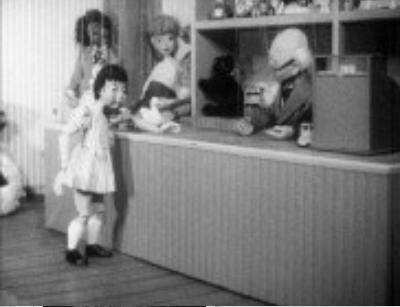
Six months later, with still nothing happening and money beginning to run out, they all had to take other jobs to keep the company afloat.

They installed a phone and waited for their first big order. The new company, AP Films, set up their fledgling film studios at Islet Park, an Edwardian mansion situated on the banks of the Thames at Maidenhead. The duo decided to form their own production company and offered work to Reg Hill and John Read from Polytechnic's art department, and Sylvia Thamm, the company's secretary. But two years later, unable to overcome their financial difficulties, Polytechnic went into liquidation leaving Anderson and Provis, as well as many other members of staff unemployed. Acting as a director, Anderson quickly established a rapport with Polytechnic cameraman Arthur Provis. In 1955, shortly after the advent of Commercial Television in the UK, Gerry Anderson was invited to join Polytechnic Films, a small production company based in Taplow, Buckinghamshire. From time-to-time they are visited by The Toy Inspector, a sort of patriarchal figure who ensures that the toys are alright. Needing somewhere to live Twizzle and his new found friends build a town of log cabins which they name Stray Town where all the stray toys in the world are welcome. As a reward, Twizzle is given a shiny new racing car, but after crashing it he exchanges it with The Garage Man for a red breakdown truck and sets about rescuing broken toys such as Chawky -the white faced golliwog, Jiffy -The Broomstick Man, Bouncy -a ball that has lost its bounce, Candy Floss -the mama doll that can't say 'mama', The China Doll, Thin Teddy Bear, Jack-In-The-Box and Polly Moppet. One of these involves Twizzle using his unique abilities to rescue a little girl doll from a house fire.

RANDY EISENBOWER THE TWIZZLE SERIES
He takes refuge in a dog kennel where he meets Footso, a big black cat whose paws are so enormous that he keeps falling over them.įootso has also run away from home, and so the two fugitives team up and become firm friends before setting off on a series of adventures. Horrified that he will have to go and live with Sally Cross, Twizzle hides in the Jack-In-The-Box until nightfall when he escapes the shop by using his 'twizzling' ability. He had already resigned himself to living on the shop counter forever when, one day, a horrible little girl called Sally Cross came into the shop and bullied the shop owner into selling him for just two-shillings.

He lived in a toyshop with his other toy friends where, priced at two-shillings-and-sixpence, he was a little too expensive for most people’s pockets. Twizzle was a 'living' boy doll who had the ability to extend his arms and legs to amazing lengths. Today, almost half a century later, Anderson can look back on a career that has seen him produce his unique brand of family entertainment that continues to enthral audiences around the world. 'Here I was ready to make 'The Ten Commandments' and they were asking us to work with puppets!' Said Anderson many years later. Gerry Anderson's new production company was ailing and in desperate need of a cash boost when, in 1957, they were approached by children's writer Roberta Leigh and her colleague Suzanne Warner at the behest of Associated Rediffusion to make a series of 52 thirteen-minute episodes of a children's puppet series.


 0 kommentar(er)
0 kommentar(er)
